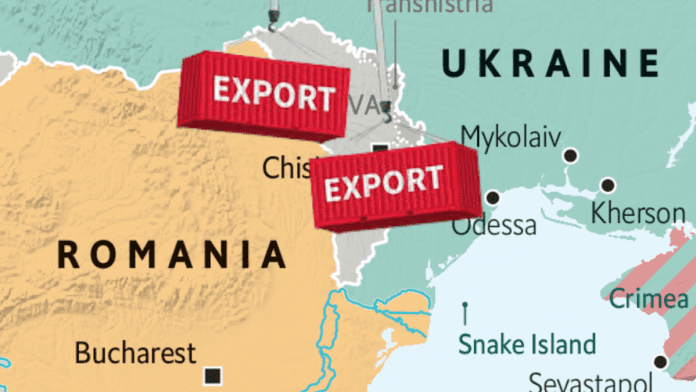News in brief: Romania plans to double its capacity to transfer grains from Ukraine, reaching four million tons monthly using waterways and railways.
Romanian transport minister, Sorin Grindeanau, has disclosed that the country will double its capacity to transfer grains from Ukraine from two to four million tons per month.
The minister revealed that the move would be made using naval waterways and railway routes. Grindeanau promised to optimise the use of the Sulina channels, location of Ukraineâs Danube ports, under an 18 million euros project funded by the European Union (EU).
He also remarked on the impact that the 1 billion euros investment in Constanta portâs railway connectivity and other road and railway infrastructure projects investments would have on post-war reconstruction in Ukraine.
The Romanian transport ministerâs statements come on the heels of a high-level meeting between representatives of Romania, Ukraine, Moldova, United States (US), and the EU, held in Galati (RO) on August 1 2023.
The representatives assured of their commitment to escalate grain exports from Ukraine during the meeting. They also discussed global food insecurity caused by Russiaâs withdrawal from the Black Sea Grain Deal.
Representatives of the US Embassy had expressed a commitment to partnering with the government and people of Ukraine. They assured of their country’s support in expanding alternative export routes and modernising Ukraineâs border crossings. Additionally, they promised to improve critical infrastructure for rail and road transportation, expand access to train car parts and railway assembly line. They too mentioned assisting the private sector along the Danube in enhancing export capacity.
Russiaâs withdrawal from the deal have had severe consequences in global grain markets as food prices have risen by over 10%. The situation has been further compounded by its offensive against Ukrainian ports and grain silos.
Romania is located at the crossroads of Central, Eastern, and Southeastern Europe and it borders Bulgaria to the south, Ukraine to the north, Hungary to the west. It also borders Serbia to the southwest, Moldova to the east, and the Black Sea to the southeast. Thus, it is strategically placed to improve Ukraine’s exports.



